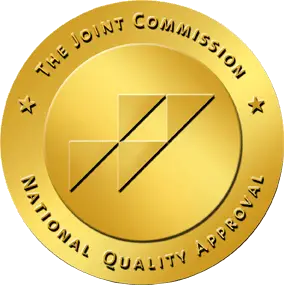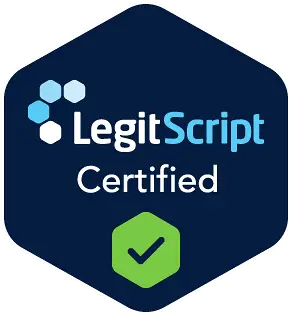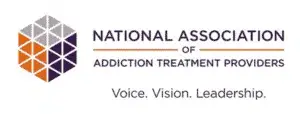Track marks are linear scars that occur because of intravenous drug use. Learning what track marks look like can be the first step in getting professional help for a loved one.
Substance use disorders can manifest in many different ways. When it comes to intravenous (IV) drug use, one of the more visible signs is the appearance of “track marks.” Track marks can be alarming both for the individual experiencing them and for friends or family who notice these physical changes. This guide explores everything you need to know about track marks, including how they form, the risks involved, how to manage and treat them, and the importance of seeking professional help for addiction.
What Are Track Marks?
Track marks are the visible signs left on the skin from repeated intravenous drug use. They typically appear as puncture wounds, scars, or bruises along the veins. These marks most commonly manifest on the arms, but they can appear anywhere a person injects drugs, including hands, legs, feet and, in some cases, the neck. Track marks can be red, pink, dark, or even scar-like, depending on their stage of healing and how frequently injections occur in the same spot.
What Is the Medical Term for Track Marks?
Clinically, track marks may be described as needle track scars or needle track marks. Medical professionals sometimes use more general terms such as “injection site scars,” “injection-related skin lesions,” or “punctate scars.” While there is not always a single, uniform clinical term for track marks, the concept is widely recognized among health care providers—particularly those who specialize in treating substance use disorders and wounds.
This Season, Give Yourself the Gift of a Fresh Start.
Whether you are struggling with addiction, mental health or both, our expert team is here to guide you every step of the way. Don’t wait— reach out today to take the first step toward taking control of your life.
What Are the Causes of Track Marks?
Track marks result from repetitive trauma to the vein and surrounding tissues. Each time a needle punctures the skin and vein, it can cause:
- Microtears or lesions: The needle physically damages the skin and blood vessel. Over time, repeated punctures create scarring.
- Inflammation: The body responds to injury with inflammation, redness, and swelling. Chronic inflammation can discolor the area.
- Bruising and hematoma formation: Accidental damage to the blood vessels can cause bleeding under the skin.
- Scar tissue accumulation: As the skin heals repeatedly, collagen builds up, creating hardened or raised areas.
Additionally, poor injection technique, using blunt needles, or failing to rotate injection sites can worsen the appearance of track marks over time.
What Do Track Marks Look Like?
Track marks can vary in appearance depending on a person’s skin tone, overall health, frequency of injections, and personal hygiene practices. Some characteristics include:
- Fresh needle punctures: Small, red pinprick-like spots
- Bruising or discoloration: Blue, purple, yellow, or greenish hues as bruises heal
- Dark or raised scars: Pronounced scarring or darker pigmentation from chronic injections
- Scabs or sores: Open or crusted areas when the puncture sites become infected or irritated
Over time, these marks can become more noticeable, especially if the same injection site is used repeatedly.
What Are the Common Health Risks of IV Drug Use and Track Marks?
Track marks are not just cosmetic concerns. They also reflect the many health risks associated with IV drug use, such as:
- Infections: Bacterial infections like cellulitis or abscesses can occur at the injection site. Shared needles pose risks for bloodborne illnesses like HIV and hepatitis.
- Collapsed veins: Chronic irritation and damage can cause veins to scar and close, making them unusable for medical procedures or future injections.
- Blood clots: Improper injection technique can lead to thrombus (blood clot) formation, which can travel and cause complications.
- Tissue necrosis: Repeated injections can reduce blood flow to certain areas, leading to tissue death.
- Overdose risk: IV administration of drugs allows substances to reach the bloodstream and brain quickly, increasing overdose risk.
What Drugs Can Cause Track Marks?
While any intravenous drug use can lead to track marks, they are most commonly associated with:
- Heroin
- Methamphetamine (“meth”)
- Cocaine (though IV cocaine use is less common than snorting or smoking)
- Prescription opioids (intended for oral use but sometimes misused intravenously)
- Fentanyl
- Steroids (in performance enhancement contexts)
The chemical makeup of the drug itself can also damage veins or surrounding tissues, compounding the risk of visible track marks and other complications.
Drug Injection Sites
Track marks can appear wherever a person injects drugs. While the inner forearm is the most common site, some people move to less visible locations in an attempt to hide evidence of IV drug use.
What Is a Drug Injection Site?
A drug injection site is any area on the body where a needle is used to deliver substances into the bloodstream. Common sites include:
- Forearms
- Hands
- Between fingers
- Feet or ankles
- Thighs or legs
- Neck or groin (in more severe cases when other veins become inaccessible)
People may choose sites based on vein accessibility, ease of injecting, or the desire to conceal marks from others.
Is It Normal to Bruise After an Injection?
Bruising after a needle injection is relatively common, even for medical procedures like drawing blood or administering vaccines. A bruise occurs when small blood vessels (capillaries) break under the skin, causing discoloration. Bruising can be more frequent with IV drug use because:
- Repeated punctures damage the same vessels and surrounding tissue.
- Poor technique increases the likelihood of missing the vein or causing extra trauma.
- Inadequate aftercare leads to continued bleeding or inflammation under the skin.
What Can Cause Bruising at an Injection Site?
Bruising may be caused by several factors:
- Needle trauma: The needle can rupture small blood vessels under the skin.
- Thin or fragile veins: Continuous IV drug use can weaken veins, making them prone to bleeding.
- Medications or substances: Some substances thin the blood, leading to easier bruising and bleeding.
- Excessive pressure: If the injection site isn’t properly compressed after injecting, bleeding can persist.
Treatment for Injection Site Reactions
If you have minor injection site reactions or bruising, you can try these home care tips:
- Apply a cold compress: This helps reduce swelling and discoloration.
- Elevate the limb: Elevating the affected area may decrease swelling.
- Use a warm compress after 24–48 hours: Heat can help improve blood flow and speed healing.
- Practice good hygiene: Clean the area gently to prevent infection.
- Avoid re-injury: Repeated injections in the same spot will prolong healing.
However, if there are signs of a serious infection—such as increased pain, redness, warmth, pus, or fever—seek medical attention immediately.
Identifying Track Marks
Understanding how to spot track marks can be crucial for identifying when someone might be struggling with intravenous drug use. Visible signs can vary based on frequency of use, injection sites, and skin tone.
How to Tell If Someone Is Shooting Up
Individuals who inject drugs may display:
- Fresh or healing puncture wounds: Especially along the arms or other commonly used areas.
- Covering tactics: Wearing long sleeves in hot weather or using bandages to hide marks.
- Frequent “bathroom breaks” or secrecy: They may isolate themselves when injecting.
- Behavioral changes: Mood swings, secretive behavior, or withdrawal from social circles.
Track marks are one indicator; however, signs like paraphernalia (syringes, tourniquets, spoons, lighters) or changes in lifestyle and health often accompany intravenous drug use.
Track Mark Appearance on Hands
Hands might show:
- Small puncture wounds between the knuckles or on the back of the hand.
- Bruising around the veins.
- Raised or hardened areas if the veins have been frequently used.
- Scabbing or discoloration where injections occur repeatedly.
Because hands are highly visible, people often try to keep them covered or claim accidental injuries to explain marks.
Track Mark Appearance on Arms
On the arms, particularly in the antecubital fossa (the crease of the elbow), track marks may appear as:
- Linear scars following the vein’s path.
- Concentrated puncture sites in the bend of the arm.
- Darkening or hyperpigmentation if older injections have scarred.
- Collapsed veins that feel hardened or “ropelike” under the skin.
Long-sleeved clothing is often used to hide these marks, even in warm climates.
Track Mark Appearance on Legs
Legs, especially the thighs, can reveal:
- Clusters of bruises or scars around accessible veins.
- Sores or abscesses when infections occur and are left untreated.
- Swelling due to poor circulation or damaged veins.
- Prominent scarring if injections are repeated in the same area.
The legs can become a preferred site once arm veins become too damaged or collapsed to use.
How Does Someone Conceal Track Marks?
People may attempt to hide track marks through:
- Clothing choices: Wearing long sleeves, pants, or socks that cover the injection sites.
- Makeup or concealer: Applying cosmetics or bandages over visible puncture wounds.
- Tattoos: Tattooing over track marks to camouflage their appearance.
- Excuses: Claiming injuries, insect bites, or other explanations for visible marks.
Hiding track marks can delay intervention by friends, family, or medical professionals. If you suspect someone is covering up track marks, it’s essential to approach them with empathy and encourage them to seek help.
How to Reduce or Eliminate Track Marks
For individuals who have stopped using IV drugs or are seeking recovery, one of the concerns may be how to reduce or eliminate track marks. While some scarring may remain permanent, various strategies and treatments can help improve skin appearance and health.
Do Track Marks Go Away?
The extent to which track marks fade depends on:
- Skin type and healing capacity: Some people scar more easily or retain discoloration longer.
- Severity of repeated injury: Long-term, frequent injections can lead to deeper, more pronounced scars.
- Proper wound care: Good hygiene, infection prevention, and consistent care improve healing chances.
- Lifestyle factors: Smoking, poor nutrition, and dehydration can worsen scar formation.
Track marks can diminish over time, but complete removal may not always be possible without medical intervention.
How to Avoid Track Marks
If you are prescribed medications that require IV administration or otherwise must inject yourself for health reasons, you can reduce track marks by:
- Rotating injection sites: This prevents any single area from repeated trauma.
- Using sterile needles: Clean, single-use needles reduce the risk of infection and scarring.
- Proper technique: Learning correct injection procedures can minimize damage to veins and surrounding tissues.
- Good aftercare: Applying gentle pressure and caring for the skin can help wounds heal more quickly.
However, if you are injecting illegal substances, the best way to avoid track marks is to stop using IV drugs altogether and seek treatment for substance use disorder.
How to Heal Bruises from Injections
For bruises related to injections:
- Cold compress immediately after the injection: This helps reduce initial swelling or bruising.
- Warm compress the next day: Encourages blood flow and helps clear the bruise more quickly.
- Gentle massage around the area (if there is no infection): Light pressure can help disperse pooled blood.
- Stay hydrated and well-nourished: Good overall health supports skin repair.
How to Eliminate Scar Tissue from Injection Sites
Removing scar tissue completely can be challenging, but some methods can lessen its visibility:
- Topical treatments: Products containing vitamin E, silicone gel, or other scar-reducing ingredients.
- Laser therapy: Dermatological procedures that reduce scar thickness or discoloration.
- Microneedling: A professional skincare treatment that stimulates collagen remodeling.
- Surgical revision: In extreme cases, surgery can remove or reduce scar tissue.
Before pursuing treatments, consult with a healthcare provider to assess the most appropriate and effective approach.
How to Get Heal an Abscess from Shooting Up
Abscesses are pockets of infection that form when bacteria enter the body through injection sites. If you suspect an abscess:
- Seek medical treatment immediately: Abscesses can become more severe or lead to systemic infection if not properly treated.
- Antibiotics or incision and drainage: Healthcare professionals may prescribe antibiotics or drain the abscess if necessary.
- Avoid self-treatment: Attempting to “pop” or drain an abscess on your own can spread infection.
- Follow all aftercare instructions: Keep the area clean, dry, and bandaged (if recommended) and complete any prescribed medication course.
Treatment for Intravenous Drug Use
For people struggling with IV drug use, track marks are only one aspect of a larger health concern. Treatment for intravenous drug use addresses both the physical and psychological components of addiction, helping individuals safely detox, manage withdrawal symptoms, and develop the skills needed for long-term recovery.
Do I Need Addiction Treatment If I Have Track Marks?
Track marks are often a sign of frequent IV drug use, which can indicate a severe substance use disorder. If you notice track marks on yourself or a loved one, it’s important to reflect on whether there are other signs of addiction:
- Cravings or compulsive use despite negative consequences
- Increasing tolerance or needing higher doses to achieve the same effect
- Withdrawal symptoms when not using
- Significant lifestyle changes, such as employment or relationship problems
Even if track marks are mild, it’s crucial to consider comprehensive addiction treatment to address the underlying causes of drug use and prevent further health complications.
Signs You May Need IV Drug Treatment
Signs that you might need IV drug treatment include:
- Inability to control or cut back usage despite wanting to stop
- Withdrawal symptoms such as tremors, sweating, anxiety, or nausea
- Ongoing health issues like infections, abscesses, or frequent hospital visits
- Strained relationships or difficulties maintaining responsibilities
- Use of risky methods (e.g., sharing needles, injecting alone, or using unsanitary equipment)
If you are experiencing any of these symptoms, professional treatment can help prevent worsening physical and mental health problems.
IV Drug Treatment Options
Intravenous drug treatments typically involve:
- Medically supervised detox to manage withdrawal safely
- Medication-assisted treatment (MAT) when appropriate (e.g., methadone, buprenorphine, or naltrexone for opioid use disorder)
- Therapeutic interventions like cognitive-behavioral therapy, group counseling, or motivational interviewing
- Support and education around harm reduction, relapse prevention, and long-term recovery strategies
By addressing both the physical dependence and underlying psychological factors, IV drug treatment programs aim to break the cycle of addiction and help individuals reclaim their health and well-being.
Best Types of Treatment for Intravenous Drug Use
The “best” type of treatment can vary based on an individual’s unique needs, but evidence-based approaches generally include:
- Medical detox and stabilization for safe withdrawal
- Residential or inpatient programs for intensive support and structure
- Outpatient programs for continued therapy and monitoring while reintegrating into daily life
- MAT for opioid or alcohol use disorders to reduce cravings and stabilize brain chemistry
- Ongoing support networks such as 12-step programs, peer support groups, or aftercare counseling
Most importantly, a comprehensive continuum of care that includes detox, therapy, support services, and relapse prevention planning often yields the best outcomes.
Where to Go for IV Drug Addiction Treatment
Numerous facilities specialize in treating substance use disorders, including:
- Detox centers for the initial withdrawal phase
- Inpatient rehabilitation facilities for intensive, round-the-clock care
- Outpatient clinics for continued therapy and group sessions
- Community health centers with harm reduction services
- Specialty programs like The Recovery Village Palmer Lake, offering a full spectrum of addiction treatment services tailored to meet each individual’s needs
If you or a loved one are struggling with IV drug use, reaching out to a trusted treatment provider can be the first step in the recovery journey.
Get Treatment for Addiction in Colorado
Addiction is a disease that can overtake every area of someone’s life, but it doesn’t have to stay that way. Treatment programs at The Recovery Village at Palmer Lake are evidence-based and personalized to begin the recovery journey in a safe, comfortable environment. Reach out to learn more about our Colorado addiction treatment programs.
FAQs on IV Drug Use and Track Marks
Can IV Drug Use Increase the Risk of Blood Clots?
Yes. Injecting drugs can increase the risk of blood clots (thrombosis) due to:
- Vein damage: Repeated trauma to veins can prompt abnormal clotting.
- Contaminated substances: Particles or additives in street drugs can irritate or obstruct veins.
- Improper injection technique: Missing the vein or injecting too quickly can injure blood vessels.
Blood clots can be life-threatening if they travel to vital organs like the lungs (pulmonary embolism). If you experience sudden pain, swelling, or redness in an extremity, seek medical help immediately.
Are You Still Able to Donate Plasma If You Have Track Marks?
Blood and plasma donation centers often have strict guidelines to protect recipients from transmissible infections. Generally, people who have a history of IV drug use may be temporarily or permanently deferred from donating, especially if the drug use occurred recently or there is concern about shared needles. Policies can vary, but track marks associated with recent IV drug use typically prevent plasma donation to reduce the risk of transmitting bloodborne diseases like hepatitis or HIV.
What Are Some Home Remedies to Remove Track Marks?
While home remedies might help fade or minimize the appearance of track marks, they typically work best on mild scarring or discoloration. Possible methods include:
- Topical creams containing aloe vera, vitamin E, or over-the-counter scar gels
- Warm and cold compresses to reduce bruising and inflammation
- Hydration and nutrition to support overall skin health
- Exfoliation and gentle massage to encourage cell turnover and minimize scar tissue
Severe or older scars may require professional medical treatments like laser therapy or microneedling for more significant improvements.
Can Drug Use Lead to Bruising?
Yes. Certain drugs can cause bruising even without injection. For example, substances that thin the blood (like alcohol or certain prescription medications) can make you more prone to bruise. Stimulants can reduce appetite and compromise nutrition, which may also weaken blood vessels and slow healing. Additionally, heavy alcohol use or prolonged stimulant abuse can lead to deficiencies in vitamins (such as vitamin C or K) that are crucial for healthy skin and blood clotting.








